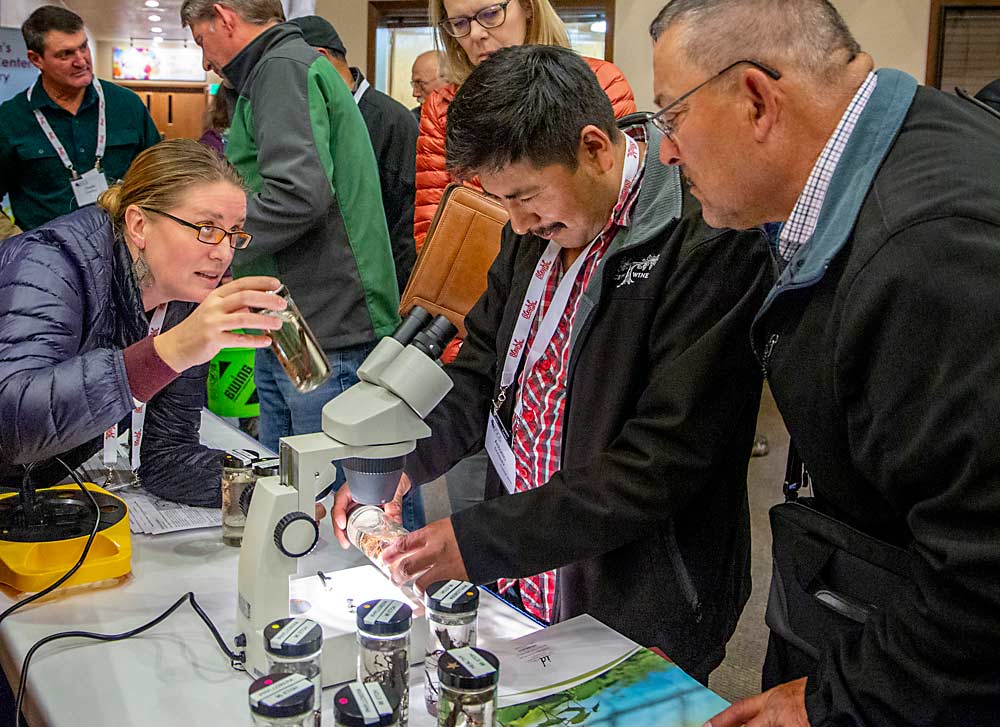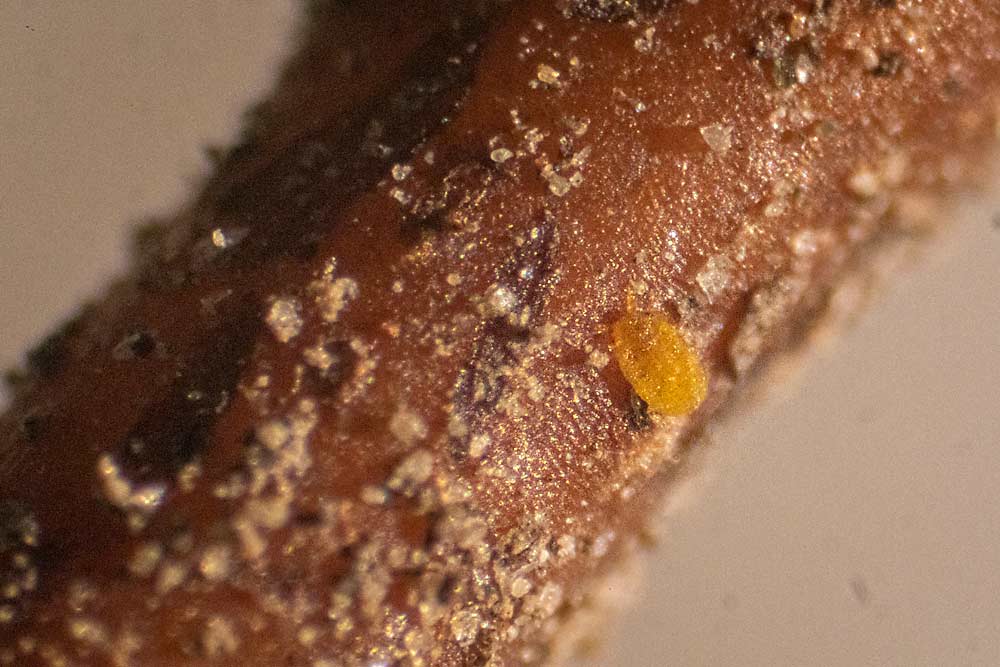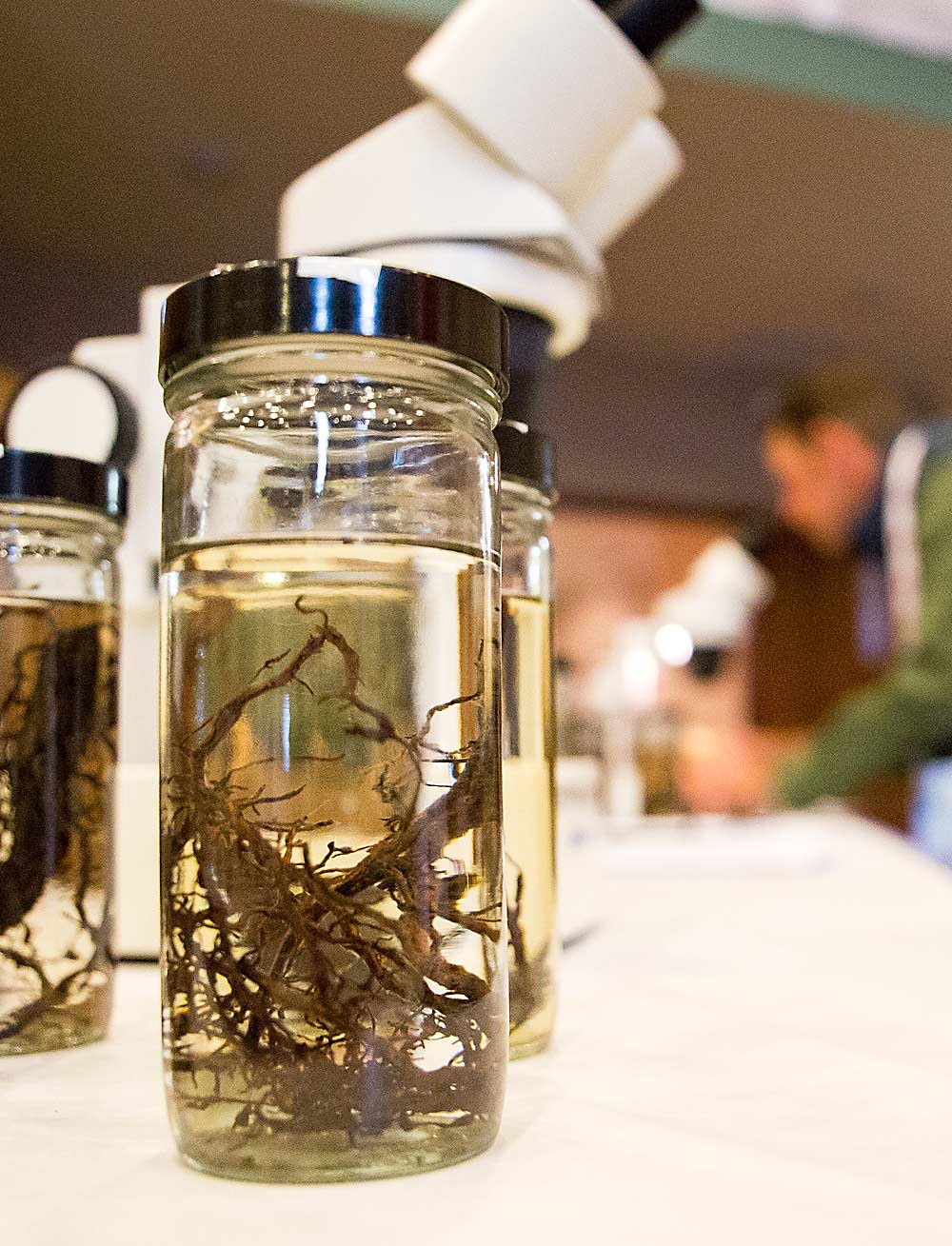
Phylloxera, a grapevine pest that has reared its head in Washington, is not limited to the Walla Walla area, where growers first found it in the fall.
Since then, researchers have found the root-feeding insect in isolated sections of vineyards in the Lower Yakima Valley, too.
“I can very positively say that it is not just Walla Walla,” said Michelle Moyer, a Washington State University Extension viticulturist, to growers at the Washington State Grape Society Annual Meeting in November in Grandview.
Moyer and WSU colleagues are urging growers to keep their eyes peeled for the pest, a pale yellow aphid-like insect that feeds on grapevine roots. Phylloxera don’t feed on the berries directly, but the root feeding will cause the vine health to decline and is eventually fatal.

Phylloxera is native to North America and evolved with tolerant native grapevines. In the 1800s, the U.S. unwittingly passed the pest to Europe while breeding for mildew resistance, Moyer said. For about 25 years, the pest decimated grapevines in Europe, which were own-rooted Vitus vinifera. Growers blamed everything from steam engines to witches to electricity. A 7-year-old boy hired to watch the vineyard reported yellow bugs crossing the soil, finally leading investigators to the culprit.
To monitor for phylloxera yourself, dig up active roots about 1 foot deep to check for the insect itself and for the swollen galls that form on roots where the pest has fed, WSU recommends. Start looking in areas where vines appear to be water- and nutrient-stressed, in soil with higher clay amounts and at block corners where machines enter. Sample both symptomatic and asymptomatic vines.
The solution to phylloxera will likely lie in resistant rootstocks, which are commonplace in most wine production regions around the globe. In Washington, where growers haven’t considered the pest a problem, most wine grapes grow on their own roots. That will probably change in some areas.
“For those of you with phylloxera in your vineyard, your good ol’ days of self-rooted vines are probably over,” said Doug Walsh, a WSU entomologist who works with Moyer at the Irrigated Agriculture Research and Extension Center in Prosser.
Chemical controls help suppress the insect but won’t eradicate it, WSU Extension specialist Gwen Hoheisel said in a follow-up interview.

While growers keep watch, WSU researchers have proposed research projects to study the pest biology and search for monitoring and management techniques. Walsh and Moyer plan to team with Hoheisel and Markus Keller, a WSU viticulture researcher. Meanwhile, Keller and Moyer have been funded for years by the wine industry to evaluate and identify rootstocks for a variety of attributes, including pest resistance.
Moyer also encouraged perspective. While she found phylloxera in several vineyards, hot spots lay mostly in isolated pockets within those vineyards. They almost always were in replant sites or near an older vineyard, leading WSU researchers to believe they’ve been there for years. This is not a new outbreak, she said.
Washington’s industry will beat phylloxera, just as other wine regions have in the past, she predicted.
“We did it 150 years ago; we’re going to use rootstocks,” she said. “But maybe not everywhere, just in select sites. So keep calm. It’s fine.” •
—by Ross Courtney
If you find phylloxera:
Growers who find phylloxera in their vineyards are asked to contact the Washington State University viticulture and enology faculty, who are tracking the pest’s geographical scope. For information about chemical control, visit wine.wsu.edu/extension/grapes-vineyards/grape-pests and find the “Root Pests” section.
Related:
—goodfruit.com/tag/phylloxera






Leave A Comment